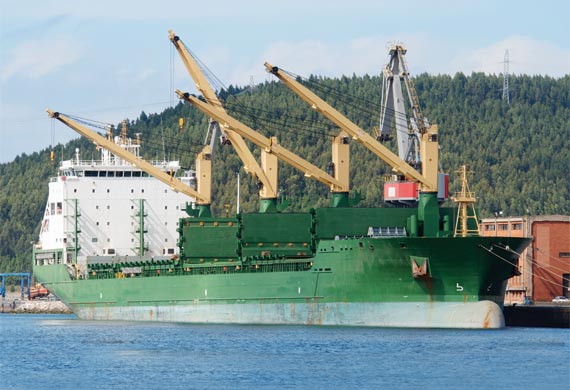
Re-thinking the green imperative
The ability of a port to integrate environmentally friendly methods in port activities, operations and management is critical to its future success and there is a need to delve into the finer aspects of existing green ports and their stake towards building a sustainable future. Lionel Alva… A green port aims to utilise efficiently its […]

The ability of a port to integrate environmentally friendly methods in port activities, operations and management is critical to its future success and there is a need to delve into the finer aspects of existing green ports and their stake towards building a sustainable future. Lionel Alva…
A green port aims to utilise efficiently its resources, to reduce the negative impact on regional environment, to raise the environment management level and improve the quality of the natural surroundings of the port area. The concept of the green port includes the idea of protecting the environment and its entire infrastructure works, in the sustainable development policies that it follows, and in all the activities and operations conducted in the area.
Working towards sustainability
The overall idea and research interest related with the development of sustainable port infrastructure evolved around the core requirements of continuous reduction of negative environmental impacts without jeopardising economic growth.
There are plenty of measures that can be taken to establish an ecological port, such as enforcing policies that reduce air emissions, or to design properly the landscape of the port in order to include trees which absorb noise and diminish pollution.
David Huck, Port Director, Port of Liverpool informs, “This year we’re investing in AutoGates and a new vehicle booking system for our Liverpool container terminals. These will help to keep the traffic flowing and therefore reduce carbon emissions.”
Other measures include the use of renewable energy for the port operations and activities, or to enforce sustainable practices, such as recycling and reusing these materials. Ports also have taken initiatives to reward environmentally friendly vessels.
“Very long lay times in port of cargo and cruise ships sometimes mean that such vessels are largely responsible for emissions in the port. Since the two existing cruise terminals are located so close to residential areas, it is here that a reduction in emissions will be sought more swiftly than in the remainder of the port,” observes Axel Mattern, Member of the Executive Board of Port of Hamburg Marketing.
The overall idea and research related interest with sustainable port infrastructure has evolved around the core requirements of continuous reduction of negative environment impacts without jeopardising economic growth.
Energy efficiency in ports is largely linked to investments in new equipment.
Huck adds, “We’ve invested in new diesel electric straddle carriers and terminal tractors, so cutting emissions from our own vehicles. Our systems are electric and our lighting is energy efficient. Finally, we control our fleet through global positioning radio system(GPRS), resulting in more efficient movements.”
Ostensibly, proper analysis of the energy consumption brings additional information in ordinary business cycle from which stakeholders can obtain more reliable and accurate information about company’s general performance and efficiency, not only regarding energy efficiency but also from the operational and cost perspectives. The growth of trade activities and need for competiveness on the global market are forcing ports around the world to systematically and continually assess all possibilities for the optimisation and related costs reduction. Conquently, a port which embarks on resource protection won’t lose its competitive edge – on the contrary, it can even become more attractive.
Building a viable future
According to the and environmental planning for sustainable urban development report on sustainable principles, ports have to form their policies and establish an efficient system for monitoring energy and water consumption, including indicators of urban environment quality (air quality, water, energy, and water use). This highlights the fact that effective adaptation solutions are not just about physical layouts and engineering projects, but also about the need to fundamentally transform the current management and planning practices of ports. The implementation of the green port concept in any organisation implies the adoption of a new style of management, thus allowing the company to establish their objectives, commitments and responsibilities to the society and the environment, developing the port activity under well-defined environmental requirements which reduce the negative impacts of port activities.
The future competitiveness of ports will also depend on their capacity to integrate themselves into the transport routes and this capacity will in turn depend on the added value with which the port can provide the client. Sustainable transformation of ports has to be based on their own strategy, developed through process of learning from own experiences and previously executed successful programmes and projects in a broader environment.

